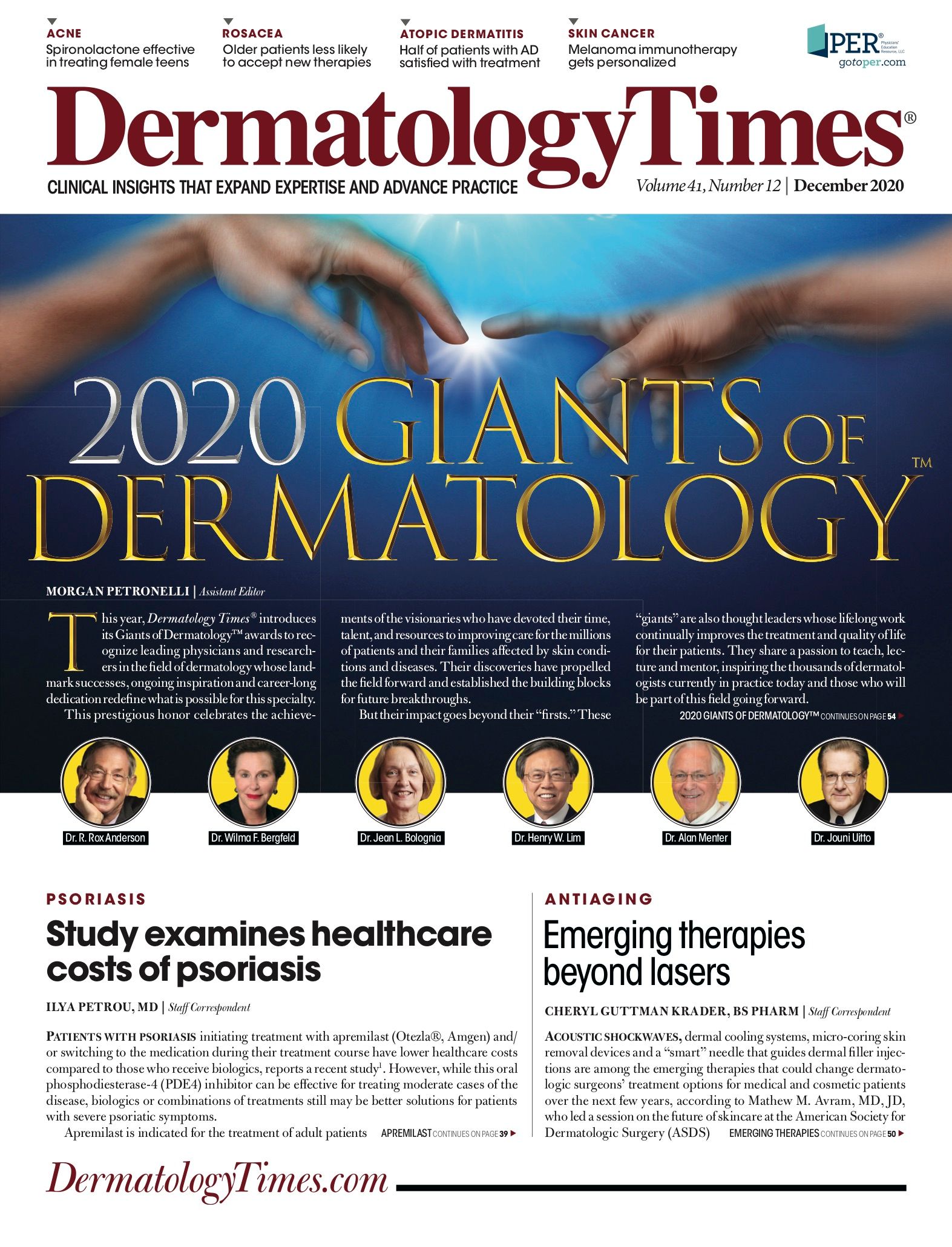- Case-Based Roundtable
- General Dermatology
- Eczema
- Chronic Hand Eczema
- Alopecia
- Aesthetics
- Vitiligo
- COVID-19
- Actinic Keratosis
- Precision Medicine and Biologics
- Rare Disease
- Wound Care
- Rosacea
- Psoriasis
- Psoriatic Arthritis
- Atopic Dermatitis
- Melasma
- NP and PA
- Skin Cancer
- Hidradenitis Suppurativa
- Drug Watch
- Pigmentary Disorders
- Acne
- Pediatric Dermatology
- Practice Management
- Prurigo Nodularis
- Buy-and-Bill
Publication
Article
Dermatology Times
Pandemic Lessons
Author(s):
Read how some experts are balancing both their own health as well as the health of their patients during the COVID-19 pandemic.
In the downtime created by the COVID-19 pandemic, some dermatologists are turning their attention to their own health and that of their specialty.
“Crises present many opportunities,” says Adam Friedman, MD. “You just have to look for them and jump on them.” He is professor and interim chair of dermatology, George Washington University (GW) School of Medicine and Health Sciences, Washington, D.C.
Amid travel bans and shelter-in-place orders in mid-March, many meetings including the American Academy of Dermatology (AAD) shut down, without contingency plans (AAD did launch its event as the AAD Virtual Annual Meeting Experience June 12-14, 2020). “I saw an opportunity there to leverage the virtual education we had been doing at GW to provide programing much more broadly.”
When the pandemic scotched large gatherings, he says, virtual education via live-streaming or recording became much cheaper and easier than assembling speakers and attendees for in-person events. Friedman mobilized resources so that on March 23, his department, in collaboration with MedStar Washington Hospital Center and Howard University, could present a free 7.5- hour virtual conference that drew 900 real-time attendees. A subsequent online acne symposium attracted 700 attendees.
By now, says Friedman, people are somewhat tired of virtual education and yearn for live conferences. However, in his view, online education still provides unprecedented flexibility. “You need to offer it in several ways, including live and archived, and in unique formats to engage the audience.”
Additionally, GW has opened all its resident didactic opportunities to virtual attendees. “From a national standpoint, in addition to people who rotate with us in the clinic, we have five to six virtual rotators every month.” For each rotator, the program includes a monthly 30-minute meeting with Friedman and his associate program director Joseph Zahn, MD. “It’s more work,” says Friedman, “but it’s worth it.”
On a broader scale, he says, the pandemic has nudged the needle regarding disparities in dermatology. “Our workforce does not mirror what the population looks like,” he says. When even photo atlases used for training lack diversity, results can include poor care for patients of color, he adds.
To foster inclusivity, Friedman has partnered with Solomé Rose, master of public policy (MPP), an expert in diversity, inclusion and equity consultant, to institute a quarterly health-equity program that Friedman hopes one day to introduce nationwide. He credits COVID-19 for loosening industry purse strings and red tape to get the pro- gram started. “If this wasn’t the middle of the pandemic, where health disparities were so evident — and the anger, disappointment and hurt weren’t so palpable — I don’t know if we would’ve got- ten this funded at the level it needs to be funded.”
The pandemic also allows time for reassessment. Joel Schlessinger, MD, says that instead of having daily hours from 7:30 AM until 5 PM, his practice now runs from 9 AM to 4:30 PM. “Slowing down allowed me to see the bene- fits of working a little less than I had prior to the pandemic,” says Schlessinger, an Omaha, Nebraska-based board-certified dermatologist and cosmetic surgeon and CEO of LovelySkin. “That may have affected our numbers, but it has made for a much happier life in general.”
Slowing down has allowed Schlessinger to work out daily rather than three times weekly. “The pandemic has been a terrible point in so many people’s lives including our own,” he adds. “But there are some positives.”
Wendy E. Roberts, MD, has learned that prepandemic, she wasted significant time chatting with sales reps and others who visited unannounced. “I have a hard time saying no when somebody wants to come in and see me,” says Roberts, a dermatologist and dermatopathologist in solo private practice in Rancho Mirage, California. “Now you do not get into this office unless your name is on a schedule.”
Another change, Roberts used to welcome late patients. “I can’t do that anymore. COVID has given me permission to be a little bit tougher and not have to apologize for it. I can’t run behind because there are people literally sitting out in their cars waiting to come in.”
Now, Roberts has more time for thoughtful pursuits such as writing articles and answering emails. “I’ve been more productive because my time in my office has been streamlined and structured.” And her patients have noticed. She estimates that 90% of them have complimented her on the more efficient office experience.
Disclosures:
Drs. Friedman, Schlessinger and Roberts report no relevant financial interests.






